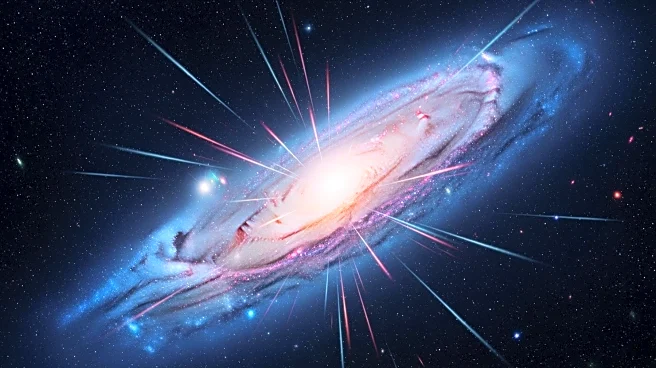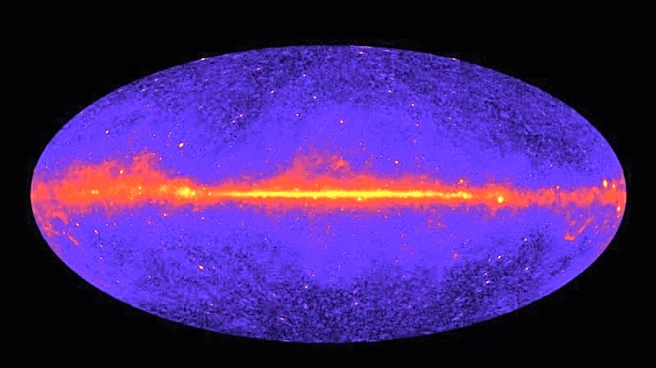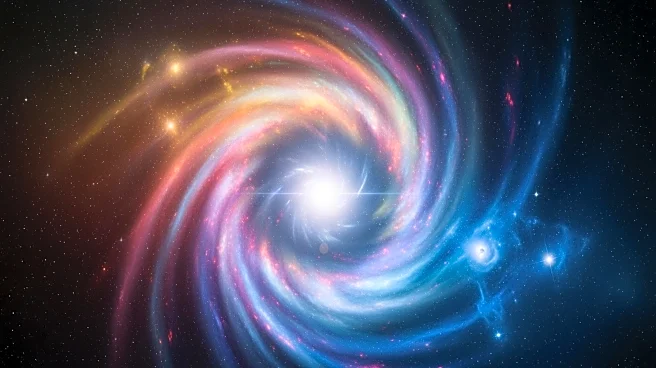What's Happening?
Researchers at the Max Planck Institute for Physics in Munich have developed a novel approach to detect dark matter using sugar crystals. The team, led by Federica Petricca, is exploring the possibility
of detecting weakly interacting massive particles (WIMPs) with lighter masses than previously considered. Traditional WIMP detectors search for interactions with regular matter, typically expecting particles to be significantly larger than a proton. However, Petricca's team is focusing on lighter WIMPs, which may interact more readily with lighter atoms like hydrogen. To facilitate this, they have created a detector using sucrose crystals, which contain a high density of hydrogen atoms. These crystals are cooled to near absolute zero to enhance detection sensitivity. Despite running the experiment for 19 hours, the team did not observe interactions indicative of WIMPs, although the setup showed potential for detecting larger particles.
Why It's Important?
The search for dark matter is crucial in understanding the universe's composition, as it is believed to exert gravitational effects on galaxies. Despite extensive research, direct detection of dark matter particles remains elusive. The innovative use of sugar crystals represents a significant shift in methodology, potentially opening new avenues for detecting lighter WIMPs. This approach could refine the understanding of dark matter's properties and interactions, influencing future research directions. Success in this area could lead to breakthroughs in physics, impacting theories about the universe's structure and evolution. The experiment's sensitivity to small interactions may also inspire similar techniques in other scientific fields.
What's Next?
While the initial experiment did not yield evidence of WIMPs, the methodology shows promise for future research. The team may refine their approach to address potential interference from other sources, such as radioactive carbon-14 in sugars. Continued experimentation could enhance the detector's sensitivity and accuracy, potentially leading to the first direct detection of dark matter particles. Collaboration with other research institutions might also expand the scope of this innovative approach, integrating it with existing dark matter detection technologies.
Beyond the Headlines
The use of everyday materials like sugar in high-level scientific research highlights the potential for unconventional solutions in complex problems. This approach may encourage scientists to explore other common substances for their unique properties in experimental physics. Additionally, the ethical considerations of using food products in scientific research could spark discussions on resource allocation and sustainability in scientific practices.












